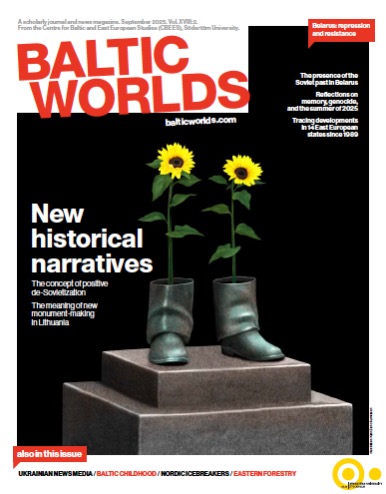Visual representation of the Holodomor From commemoration practices to contemporary art
When we were beginning to think about what we as artists and also the third generation of survivors can tell about the Holodomor we fully realized that visual representation of mass starvation in the arts is not easy. Depiction of violent events and historical traumas is already hard enough because it demands from the artist not only talent but also a deep understanding of historical context and an ethical approach to the sensitive topic. Famine is an invisible enemy. How to show the total lack of something? How to visualize very slow death, extended in time?

 Issue 2025, 2:
Issue 2025, 2: